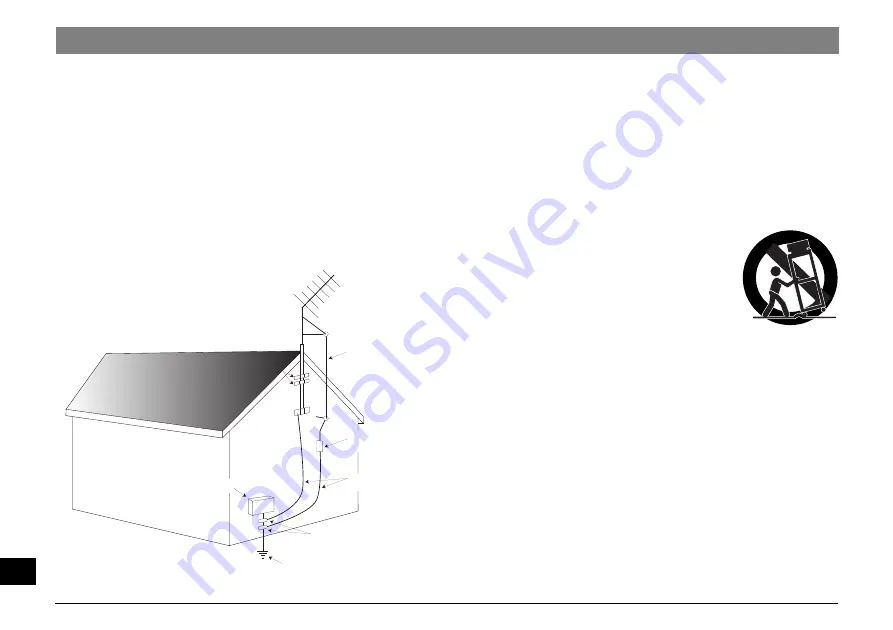
4
electric service equipment
power service grounding electrode system
(NEC ART 250, PART H)
ground clamps
grounding conductors
(NEC section 810-21)
antenna-discharge unit
(NEC section 810-20)
antenna lead-in wire
ground clamps
Outdoor antenna grounding
Be sure that any outside antenna or cable system connected to
your home terminal is grounded so as to provide some
protection against voltage surges and static charges that have
built up. Article 810 of the National Electrical Code (USA),
ANSI/NFPA 70 provides information with regard to proper
grounding of the mast and supporting structure, grounding of
the lead-in wire to an antenna-discharge unit, size of grounding
conductors, location of antenna-discharge unit, connection to
grounding electrodes and requirements for the grounding
electrode. See the diagram below.
Example antenna grounding as per
National Electrical Code ANSI/NFPA 70
Power lines
You must not locate an outside antenna system in the vicinity
of overhead power lines or other electric light or power
circuits, or where it can fall into such power lines or circuits.
When installing an outside antenna system, you must take
extreme care to avoid touching such power lines or circuits, as
contact with them might be fatal.
Transporting
Move your combination of home terminal
and cart with care. Quick stops, excessive
force and uneven surfaces may cause the
combination of home terminal and cart to
overturn.
Attachments
Do not use attachments which are not recommended by the
manufacturer of your home terminal, as they may cause
hazards.
Heat
Situate your home terminal away from heat sources such as
radiators, heat registers, stoves or other products (including
amplifiers) that produce heat.
IMPORTANT SAFETY INSTRUCTIONS (cont.)






































